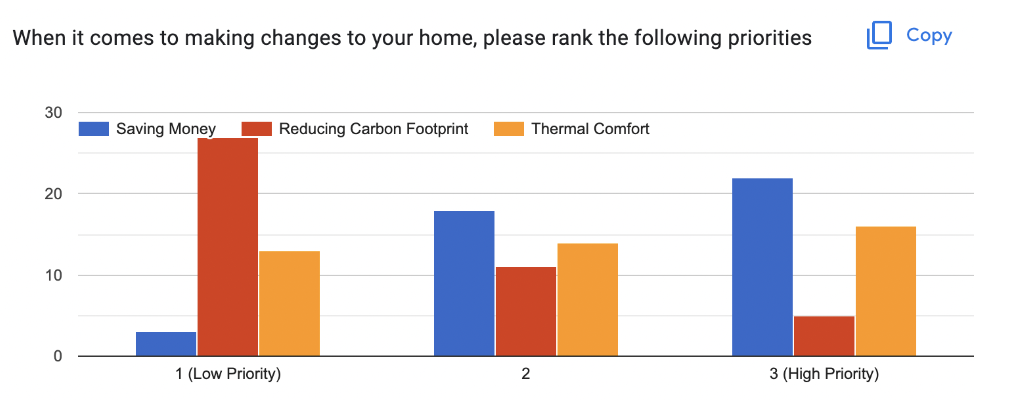Asking stakeholders valuable questions about problems in their area of expertise is useful for identifying real world problems for our desired topic: indoor thermal comfort or storage/resilience based problems. Knowledge of the individual’s homes or apartments does not majorly affect the significance of their thermal comfort/energy storage problems that we would potentially try to solve. We can assume that homeowners highly value cost-efficiency and thermal comfort, as noted from the survey results
Residential Energy Use Survey Assumptions:
For the homeowners that responded to the survey, the team is assuming that individuals’ indoor thermal comfort preference likely does not depend on the region they live in. We also assume the age of the homeowners may not correlate to their ranked priorities of saving money, reducing carbon footprint, and thermal comfort. We have not decided our target age or region the homeowner stakeholders live in, but it is assumed the different residences they live in (apartment complexes or houses) have systems that act similarly to each other for our topic. It is also assumed that the homeowners’ duration of occupancy likely correlates to their knowledge level regarding their home’s energy systems. The longer the homeowners have resided in the building, the more knowledgeable about the home’s energy systems the individuals probably are. Risks associated with these assumptions include the different preferences for different age groups. For instance, if we are aiming to improve indoor thermal comfort for homeowners of all ages, elderly individuals would likely have different preferences than individuals 18-65 years old. Another risk may be if the proposed solution for indoor thermal comfort or energy storage is not applicable to both houses and apartments, or different residential buildings.
